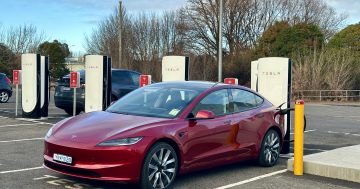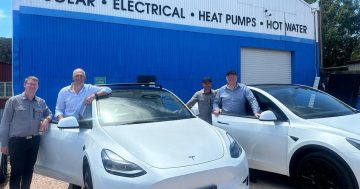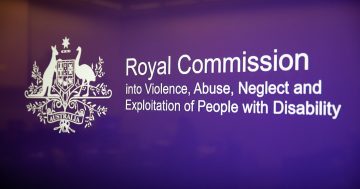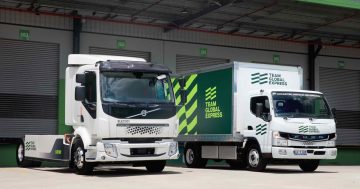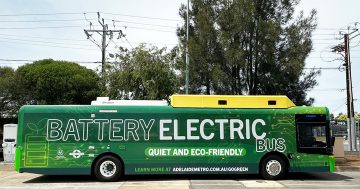
The inquiry considered how to encourage more electric vehicles (like the ones pictured) to be used on the streets of Canberra. Photo: James Coleman.
The government has refused to add e-bikes and e-cargo bikes to the Sustainable Household Scheme, even though zero-emissions motorbikes have been added.
However, the door could still be open for the option as the scheme continues to evaluate products that are applicable for inclusion.
That’s formed part of the ACT Government’s response to the 30 recommendations made by the committee inquiry into electric vehicle adoption for the Territory.
Most were either agreed to or agreed in principle, which means work is already underway in those spaces.
One major issue was around chargers, be they in apartment buildings, equally spread across Canberra, publicly accessible and accessible for people with disabilities.
In the response, Water, Energy and Emissions Reduction Minister Shane Rattenbury said work was already happening to ensure chargers weren’t installed only in certain parts of the capital.
Conversations are also being had with Tesla to include a charging location in Canberra as part of its pilot program extending the supercharger network to non-Tesla vehicles.
“Tesla has already made some of their public charging network available to non-Tesla vehicles and ACT Government will continue to encourage Tesla to open up its network both in the ACT and nationally,” Mr Rattenbury said.
Kerbside chargers in areas where off-street parking isn’t allocated for each residence is also being investigated, but complexities have already been identified.
“[They are] not suitable for a range of settings in the ACT due to issues such as the lack of available street side electricity poles,” Mr Rattenbury noted.
As for apartment buildings, the government launched the Residential Strata EV Ready Pilot Study to explore options, challenge and costs of retrofitting EV charging infrastructure to existing multi-unit developments.
The pilot does not fund the installation of chargers, but rather the underlying infrastructure to make the building ready to accommodate one charger per unit.
It’s expected further work in this area will be delivered with the ACT’s Zero Emissions Vehicles Strategy 2022-30.
A review of the Unit Titles (Management) Act 2011 is also under consideration to allow body corporates to manage EV-related matters, such as the installation of charging infrastructure.
Disability-accessible public charging facilities has proved to be a challenge, as while the ACT’s Electric Vehicle Charging Infrastructure Operational Policy requires the installation of EV infrastructure on government land and parking spaces to show disabled access has been considered, it can’t always be accommodated.
“Site constraints in existing car parks will restrict the ability to provide accessible charging bays in many locations,” Mr Rattenbury noted.
“In addition, Australia does not currently have a standard that outlines the design of an accessible EV charging station [and] the use of existing disabled parking bays is governed by legislation that won’t allow for any disabled parking bays to be limited to EV drivers with disability.”
Another area of work will be around considering whether more hydrogen refuelling needs to be provided in the ACT or surrounding regions.
This is because lack of infrastructure can act as a barrier to greater EV uptake in private and freight vehicles.
“The ACT Government continues to explore opportunities to enable the transition of transport to zero emissions vehicles, including supporting the deployment of hydrogen refuelling to enable in particular heavy vehicle transition,” Mr Rattenbury said.
Only two recommendations were flat out rejected by the government.
One was the recommendation the government undertake a cost-benefit analysis to show property owners that adding EV charging infrastructure to their homes resulted in an increase of property value, relative to the initial cost of installing it.
Mr Rattenbury said this wasn’t necessary.
“Significant evidence gathered internationally already confirms that property value increases once EV charging infrastructure is installed. There is little value in the ACT replicating this work,” he said.
“However, the government will consider how the existing evidence may be utilised in the ACT to educate and encourage installation of infrastructure.”
The other was for the government to publish a statement on how inequalities identified in a risk assessment for any future transitions in this space would be addressed in policy and programs.
Mr Rattenbury said this was part of normal policy and program development, and the publishing of such a statement could “misinform” the public given it would be fixed in time as other aspects evolve.
“Government will seek to identify potential inequality in policies and programs at inception and seek to put measures in place to observe and address inequalities that may result,” he said.
Original Article published by Claire Fenwicke on Riotact.


